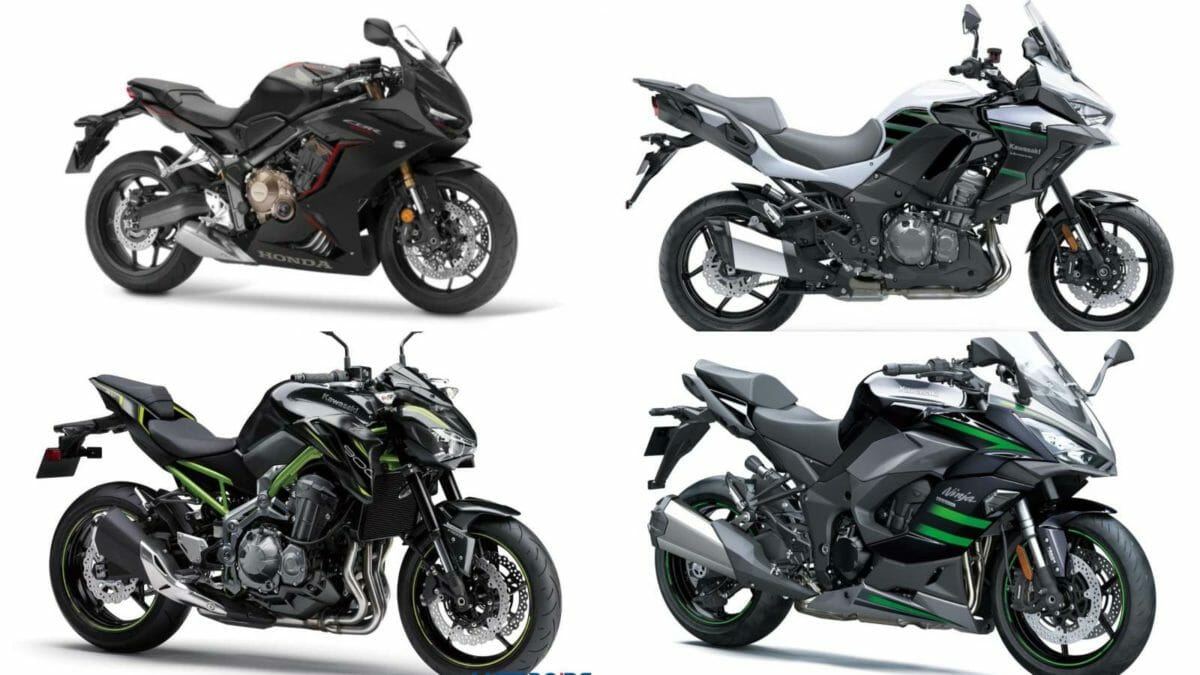The uniform thrum of a four-cylinder engine is something special, especially when you hear it emanate from the middle of your legs. In-line four bikes also have an inherent balance and stability that is especially helpful when you look at higher capacity engines. If high-speed cruising or track days are your thing, here is how you can upgrade to a four-cylinder bike for the least money.
Honda CBR 650R (INR 7,70,000)
This brand new motorcycle replaces the Honda CBR 650F and is powered by a 649cc liquid-cooled four-cylinder, DOHC 16-valve engine. Going all the way till 12,000 rpm in this bike, the engine is rated to produce 88.4 bhp of power @ 11,500 rpm and 60.1 Nm of torque @ 8,000 rpm, nearly 10 bhp more than the model it replaces.
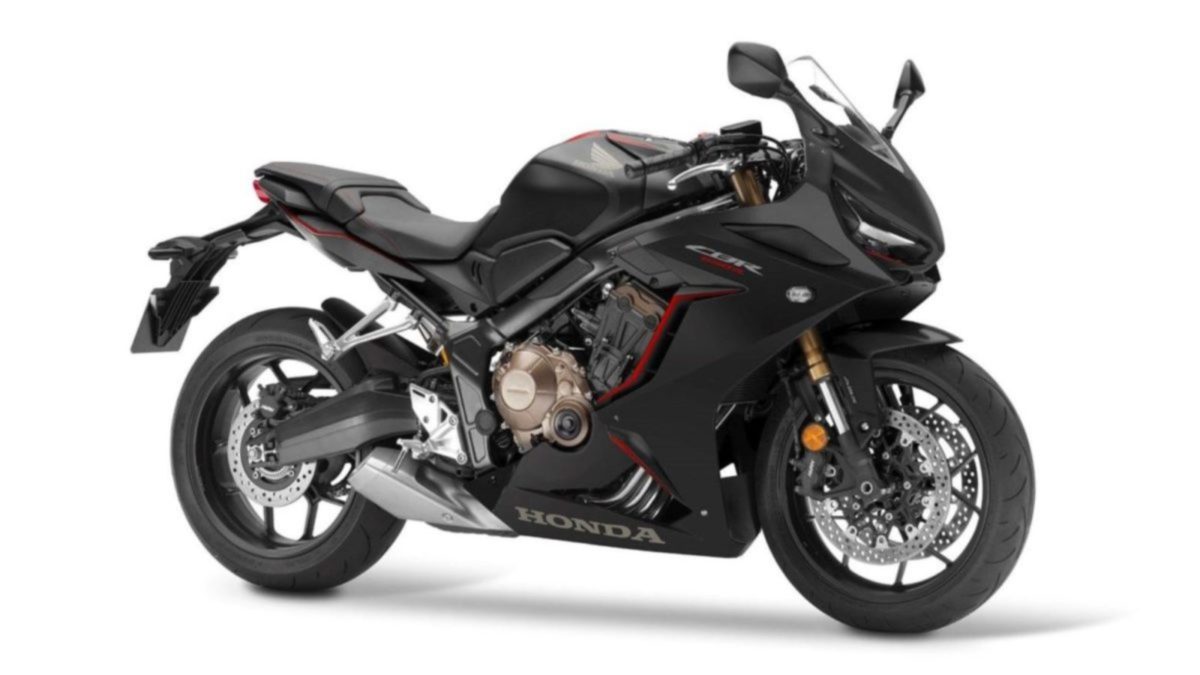
The bike features sharp styling, LED illumination, USD front forks and an all-digital display for instrumentation. The Indian-spec model comes with a slipper clutch as well as a Honda’s Selectable Torque Control System. The chassis of the new bike is 6 kg lighter than the model it replaces and is suspended by an adjustable Showa Separate Function Fork in the front and a monoshock unit at the rear. Anchorage duties are done by twin radially mounted callipers in the front and a single calliper at the rear, governed by a dual-channel ABS unit. It is available in Grand Prix Red and Gunpowder Black Metallic.
2020 Kawasaki Z900 (INR 7,99,000)
The Sugomi design, the magnificent aggressive pinched headlamps and the Z-shape illuminated tail make the Z900 a visual stunner. A key component to the Z900’s lightweight is the all-new frame in combination with the extruded aluminium swinging arm. The bike now features a traction control system, two power modes, three riding modes, smartphone connectivity, a full-colour TFT display and Bluetooth connectivity with all-LED headlights. It also features new Dunlop Sportmax Roadsport 2 tyres.
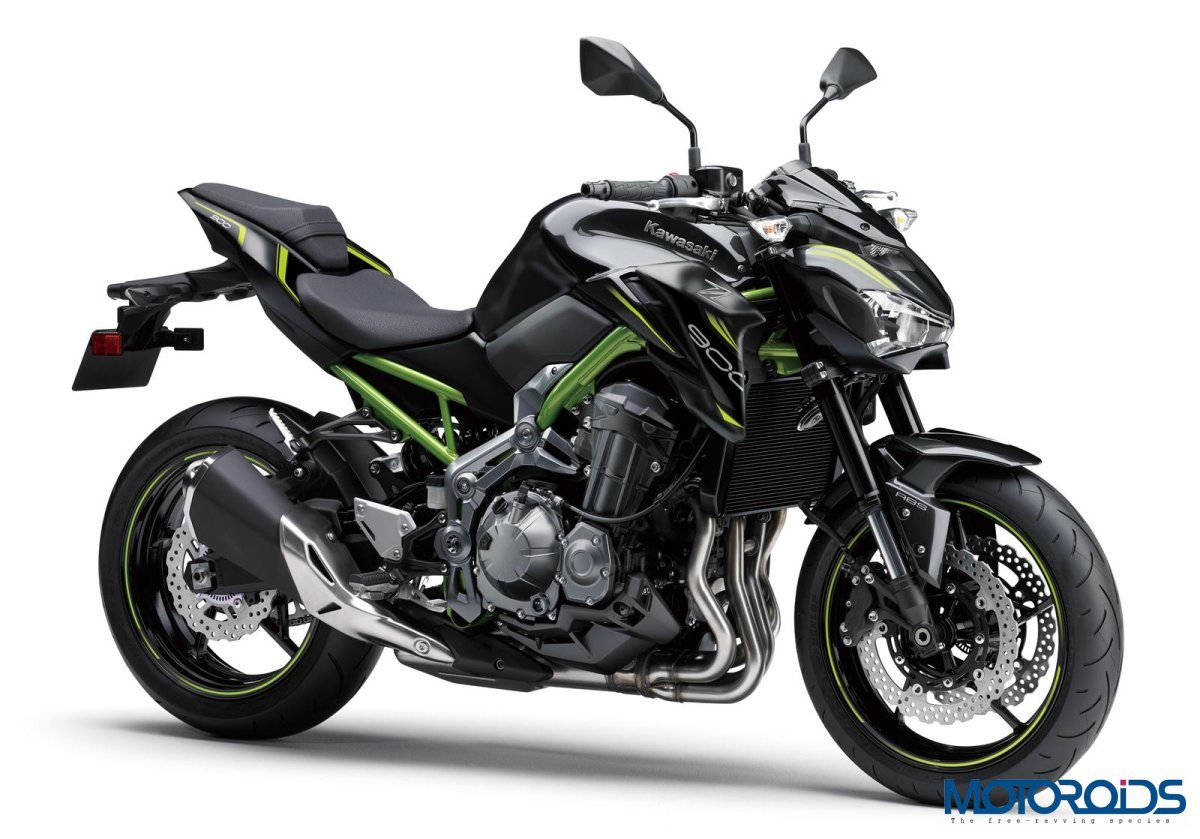
Powering the motorcycle is a 948cc, in-line four engine which cranks out 125 PS at 9,500 rpm and 98.6 Nm at 7,700 rpm. The bike tips the scales at 212 kilos (kerb) and can hold 17-litres of fuel in the tank. For suspension, the bike features 41 mm USD front forks which are adjustable for rebound and preload, along with a horizontal back-link rear spring adjustable for rebound and preload
Kawasaki Ninja 1000SX (INR 10,79,000)
The new Ninja 1000SX will be available in 2 colours (“Metallic Graphite Gray/Metallic Diablo Black” and “Emerald Blazed Green/Metallic Carbon Gray/Metallic Graphite Gray”). Powering the Ninja 1000SX is a BS6 compliant 1,043c in-line four-cylinder engine with updated throttle valves that makes 142PS of power and generates 111Nm of torque. While these numbers are identical to the previous iteration, it is the peak torque output that now comes at a higher rpm. The engine is mated to a 6-speed gearbox with a bi-directional quick shifter. Compared to the previous model, Kawasaki now offers cruise control, cornering ABS and ride modes which includes three modes of Kawasaki Traction Control and two power modes.
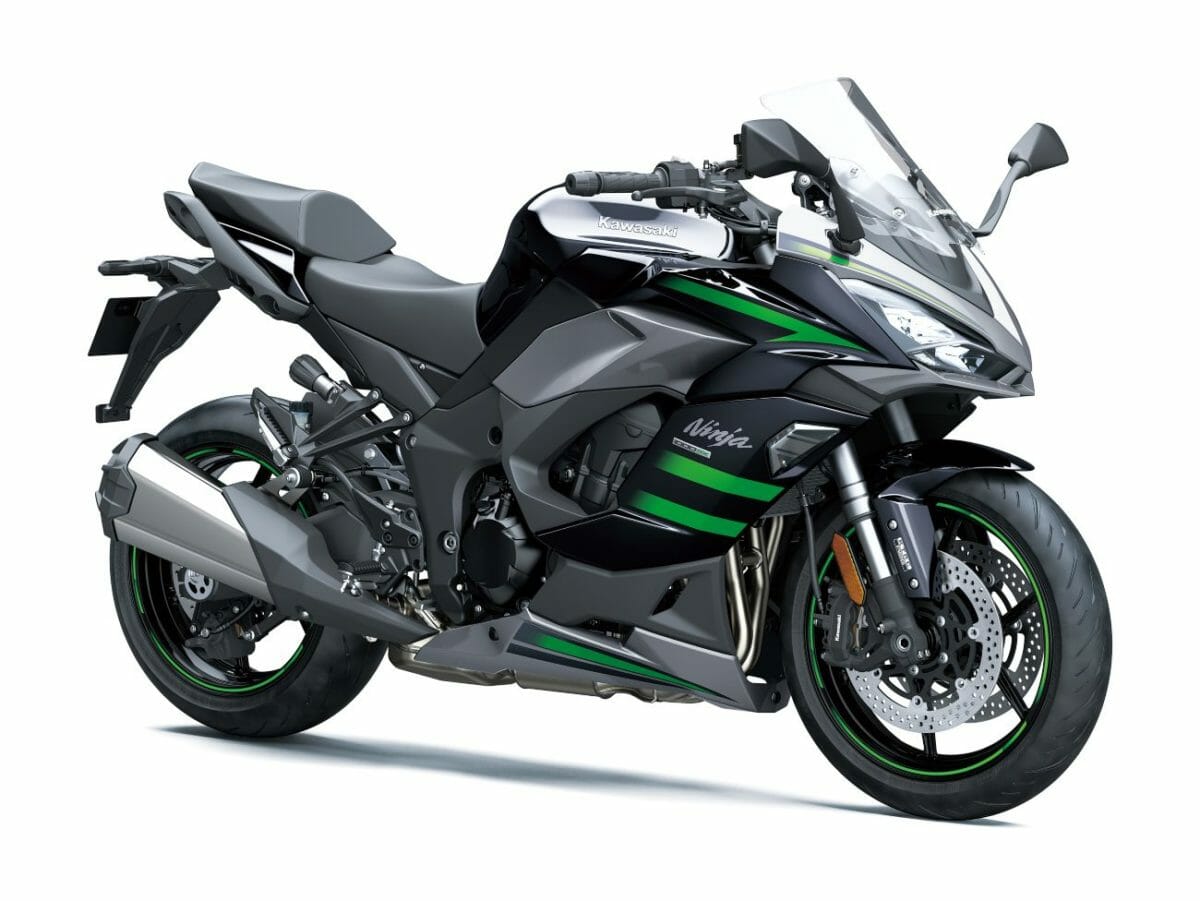
The updated Nina 1000SX also gets a tweaked styling with an adjustable front screen that can be positioned to four different heights, updated exhaust that replaces the twin-barrel both side unit offered on the former. Instead, this one gets a single-sided unit. It also gets new LED lights, better cushioning in the seats, Bridgestone Battlax Hypersport S22 tyres, an all-new digital 4.3 inch TFT colour instrumentation and Bluetooth. The Ninja 1000SX BS6 gets fully adjustable, 41mm upside-down forks and a mono-shock that’s adjustable for preload and rebound damping. Braking is via dual 300mm discs with radially-mounted calipers and a 250mm rear disc with dual-channel ABS. Updates for 2020 include a thicker and wider pillion seat for better comfort.
Kawasaki Versys 1000 (INR 10,99,000)
The Kawasaki Versys 1000 is powered by a revised, BS6 compliant 1,043 cc, liquid-cooled, in-line four-cylinder engine. It produces a maximum power of 118bhp at 9,000rpm and a peak torque of 102Nm at 7,500 rpm, and comes mated to a six-speed gearbox. The output remains unchanged in comparison to the previous model.
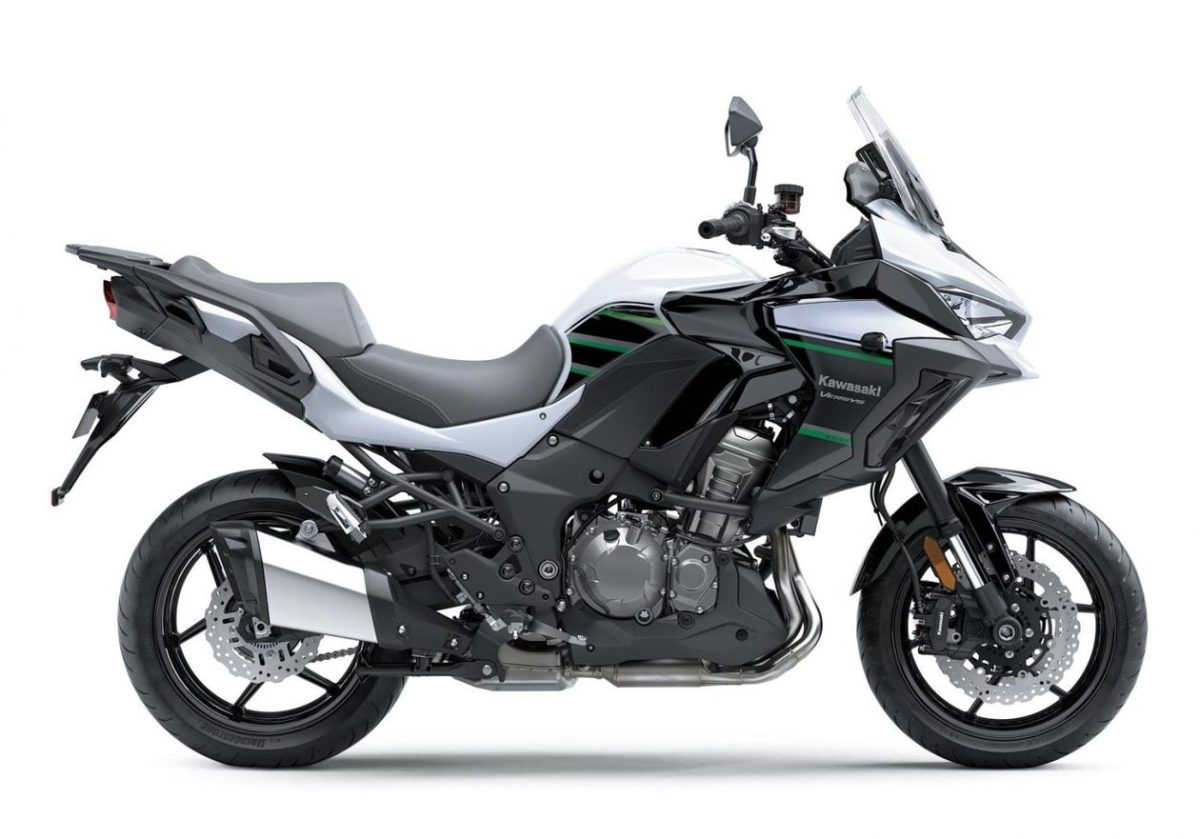
For 2020, the Versys 1000 features a host of electronic rider aids and features. These include IMU-based (KCMF) Kawasaki Cornering Management Function, which will help the rider to take corners with full confidence while the motorcycle adjusts brake force, and engine power to offer a smooth transition from acceleration to braking and back again. It also includes (KTRC) Kawasaki Traction Control, (KIBS) Kawasaki Intelligent anti-lock brakes, and standard electronic cruise control. It features also twin-LED headlamps and the rider and the pillion-rider seats are wide and long to enhance comfort over longer journeys on the motorcycle. Other features include an adjustable wind-screen, semi-digital instrument cluster with analogue tachometer, and a DC charging socket placed next to the instrument console. Some of the other highlights of the bike are radially mounted front brake callipers with assist and slipper clutch that have both a back-torque limiting function as well as a very light feel at the lever.

